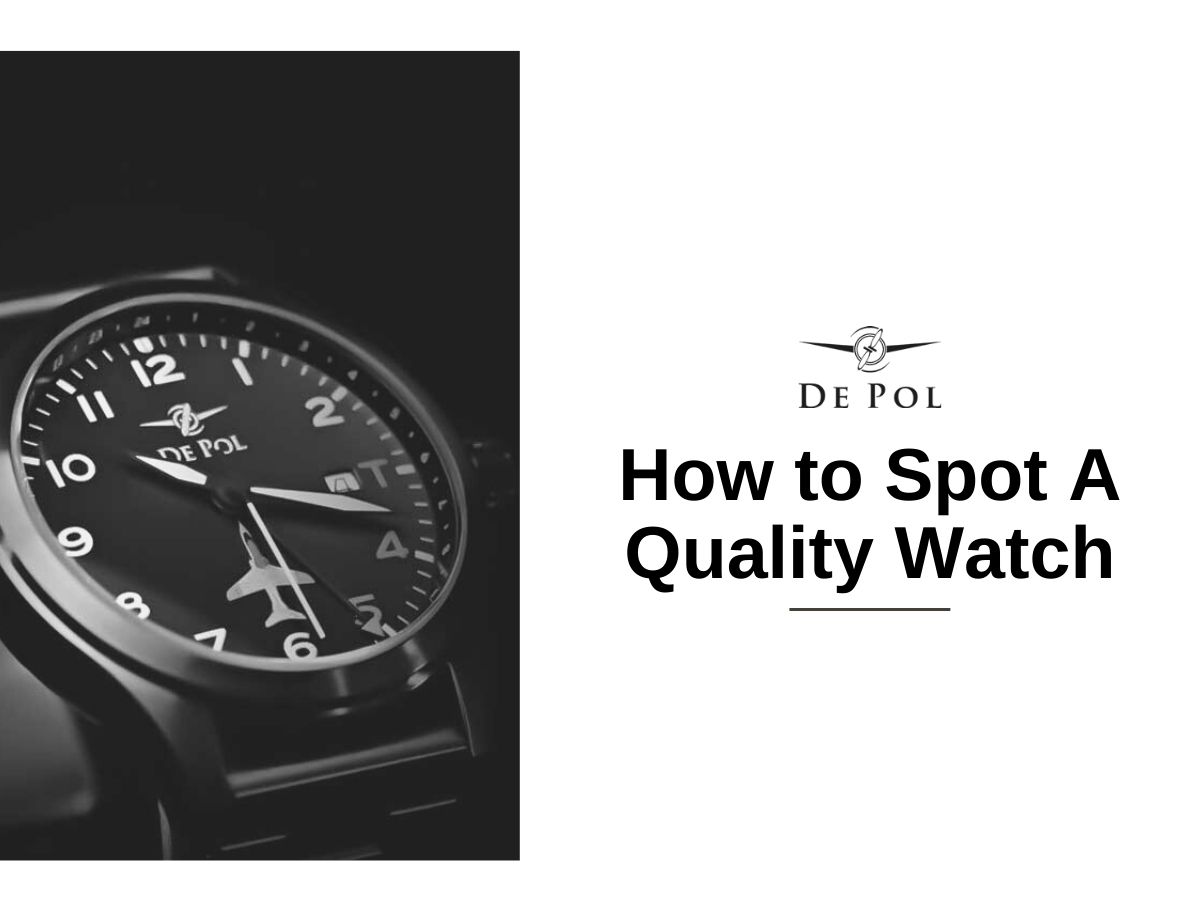When choosing the ideal watch, it’s best to pay close attention not only to the aesthetic but also to all components. After all, the quality of material and design will determine the difference between a “throwaway” watch and a solidly-built watch that will look and work great for years, if not decades. Here are some tips on finding the best timepiece for you:
Choose High Quality, not a High Price
The following factors determine the retail price of a watch:
- The cost to make the watch (i.e., materials quality, labor, and the factors margin). Depol crafts a watch with custom dial and hands available.
- The number of middlemen between the company and customer, and the margin that they require (e.g., distributors, retailers)
- Brand positioning cost. Is it mass-market, mid-range, luxury, or ultra-luxury?
The final retail price of the watch is often completely disconnected from the cost of assembly. It’s ironic because it affects the actual quality of the watch!
Many watches are selling at ranges of $200-$250, which cost less than $12-$15 to produce using subpar components. They’re able to support that price point since many consumers don’t know better and rely on brand photos or social media accounts to judge the quality of their watches. However, at the same price, you can buy a high-quality watch with luxury standard material that will stand the test of time.
At first, it may be challenging to find the best pic between so many brand options. But fear not! It’s not difficult once you know the language.
Choose Sapphire instead of Mineral Crystals
Mineral crystals are cheap to make and mainly in lower-end watches. They can easily scratch, so once the watch collides against a wall or drops from a high point, it will cause a permanent scratch on the glass. By comparison, Sapphire crystals are more expensive to make and are scratch-resistant. Even when colliding with sharp objects produces no marks or scuffs. Nowadays, Sapphire is the gold standard, and luxury brands almost exclusively use them.
If you wish for your watch to be a showpiece and look mint for years to come, choose sapphire crystal over mineral.
Check the movement
The movement is the engine of the watch that drives the minute and hour hands around the dial. It additionally powers the watch’s other functions such as the calendar, chronograph function, etc.
This is what a quartz movement looks like:
Mostly automatic watches have a glass on the back so that you can see the movement at work. Movements are not always made equal. A functional movement will always keep your time reliably, but the bad will have varying results. You can say you’re “losing time” if you own a watch with a lousy movement with inconsistent tick speeds. An unreliable watch can have you losing opportunities in a minute.
Depol company is well-known for the Swiss Ronda movement (particularly for quartz movements) watches. However, as with any “Made in” designation, we can’t say that all movements from a particular country are necessarily the best. Any country or company will have both high-quality and low-quality suppliers. Your best option is to ask who the manufacturer is for the particular model and do some independent research before making your investment.
Check the leather
When browsing for leather bands, check how they describe their leather.
“Full-grain” is the highest quality, and the name indicates that the leather retains its top layer, the most durable part of the hide. Full-grain is always the first choice for any high-quality leather product.
One notch down in quality is “top grain,” which uses slightly lower-quality hides with defects and imperfections. The absence of the hide’s top layer makes it less durable. Top-grain leather can also range in quality depending on how much of the top layer was removed.
As a rule of thumb, don’t go for “genuine leather.” It sounds like a term that verifies its real leather as opposed to synthetic. The truth is it’s a technical term used for the layers of a hide that remain after the top part is split off for higher grade leather. The fibers are generally much looser and not an ideal material for products made to be long-lasting.
Full-grain leather is long-lasting. It is vastly more difficult to rip or tear than genuine leather products are known to do.
Most leather bands are made of top grain and genuine leather, but if you’re paying for a watch, it would be well worth the extra investment to spring for full-grain.
Check small details
Examine the watch you purchase beforehand. Make sure to look out for other signs of cut corners in materials and craft.
Here are a few details that betray a watch that hasn’t been made with high-quality standards:
- Plastic spacers between the dial and the glass
- Uneven brushing
- Lightweight (it could mean that they’ve skipped certain critical materials)
Also Read: How To Maintain A Luxury Watch

